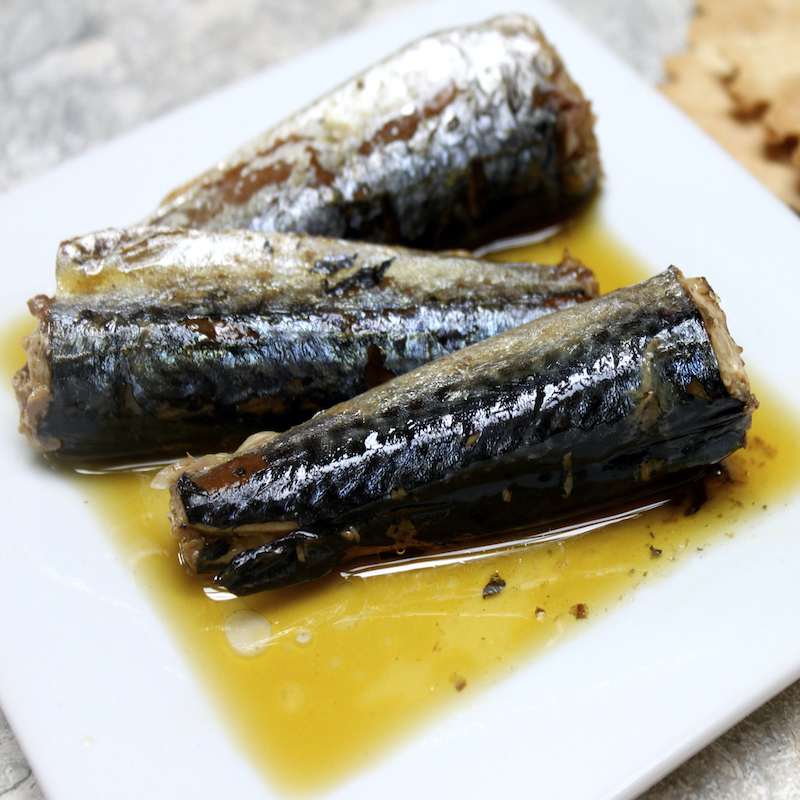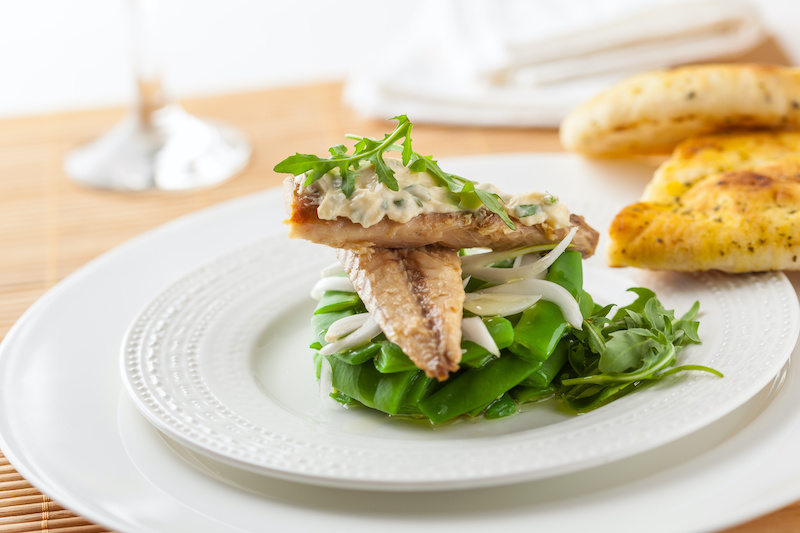The Magic of Mackerel
Mackerel isn't as well known as other seafoods, especially in America. But it offers flavor, nutrition and convenience.
Oct 11, 2022
Spain and Portugal are popular travel destinations, partly because they offer, essentially, an endless festival of seafood.
Of course cooked fresh fish and shellfish are menu favorites, but Iberians love canned or jarred gourmet varieties, too. They celebrate conservas of all kinds, dedicating entire shops or grocery aisles to cooked or pickled sardines, anchovies, octopus, mussels, squid, cockles, clams and — drumroll, please — mackerel.
Meet mackerel
Americans learned to love canned albacore tuna in the early 1900s, when it was marketed as a mild-tasting substitute for chicken. Mackerel is also a member of the Scombridae fish family, but for some reason it never got a public relations campaign in the United States. That's surprising, as it's very popular in Japan, where seafood standards are exacting.
So, let's fix mackerel's American reputation.
What exactly is mackerel?

"Mackerel" actually refers to some 30 species, of many sizes. King mackerel can weigh up to a whopping 100 pounds, for example: They congregate in huge schools, swimming near the surface of the water in warmer months and spawning in the spring and early summer along coastlines. In winter, they descend as deep as 100 fathoms (600 feet). Some species of mackerel can be found along both coasts of the North Atlantic, from North Carolina to Labrador and from Spain to Norway.
Canned mackerel in olive oil has a firm texture, with flakes that don't fall apart — it's a perfect swap in recipes that call for tuna or chicken breast, and it's usually milder and richer than albacore tuna. Mackerel has bigger fillets than sardines and anchovies while offering a savory umami punch.
Its fans are a fervent club indeed. "Mackerel is the forgotten middle child in the canned fish family, but it's time for it to get some of the glory, in my opinion. It's a fantastic-tasting healthy fish," opines blogger Natasha Bull, from Alberta, Canada — or, as she puts it, "basically the North Pole."
Is it nutritious? Environmentally friendly?
Yes and yes. This is one case where canning makes a food more nutritious, boosting its available omega-3s and calcium. (You can see a nutritional comparison with tuna here.) Both have advantages, so it's good to eat plenty of each.
Vital Choice's small "chub" mackerel (Scomber colias), known as cavalinha or cavala in Portugal, are sustainably caught off its Atlantic coast, where they are especially abundant. There they are custom-canned for Vital Choice by one of the oldest fish canneries in the world. Tiny cavalinha are traditionally preserved with their spotted skin and bones, providing that extra calcium boost.
How to turn mackerel into a meal

For an elegant but easy lunch or light supper:
- Put mackerel fillets whole in a salad, topped with a mustardy vinaigrette.
- Line them up with sliced avocado and greens in a buttered baguette.
- In warm weather, serve them whole with sliced melon or oranges and sherry vinegar.
- Natasha Bull puts capers, red onion, parsley, and cucumber in her mayonnaise-mustard mackerel salad.
- Get fancy with your version of a tuna melt. Try mackerel with your favorite mayonnaise-based salad mix, Muenster cheese, and rye bread — assemble, butter, and cook in a frying pan until the cheese melts.
- Mackerel is often a garnish on ajo blanco, the cold garlic soup from southern Spain that's thickened with almonds and bread.
- Hold on to the oil in the can (pour it into a small container and refrigerate it) for salad dressings.
For a main course at dinner:
- You might even fool a child (or grown-up meat-head) with this recipe for balls in a tomato sauce with Romano cheese (call them "meatballs" if you like, it's your secret).
- The same guests at your table might love a warm mackerel patty with Parmesan and breadcrumbs, held together with eggs and mayonnaise.
- Try a crab cake recipe with mackerel instead.
- Make a tomato-based fish stew.
- Mix it with penne, sun-dried tomatoes, spinach, and Parmesan.
Go Japanese:
- Canned mackerel is having a moment in Japan, where it's won applause for its nutrients. Markets sell it in many ways. For example, flavored with soy sauce or boiled in miso.
- Join the fun and meet Japanese blogging mom Chef Ja, who offers a recipe for an omelet with ginger, broccoli, and plain mackerel.
- Chef Ja also suggests mixing it with rice and vegetables flavored with sake and soy sauce.
If you have non-experimental eaters in your home, we suggest you make your mackerel magic for yourself. Then when someone asks what you're eating, say "Want to try?" If they're up for a food discussion, let them know that there was a time when nobody had even heard of tuna salad....
Scomber colias will have its day, too.






